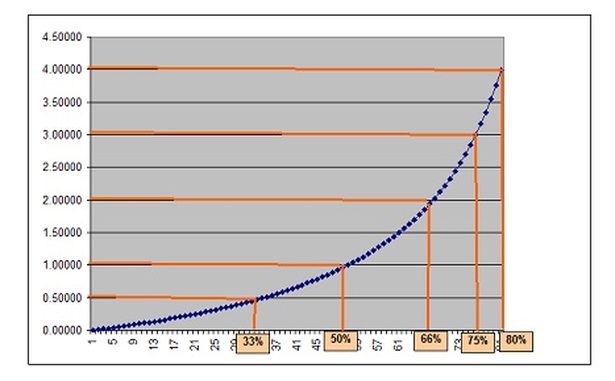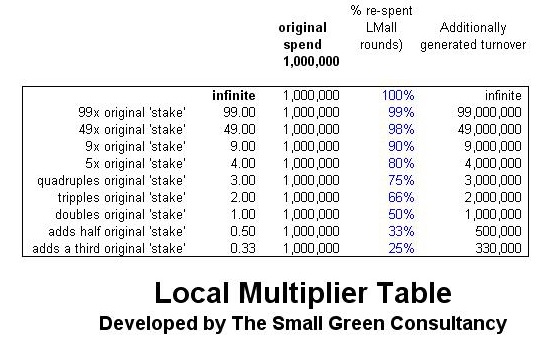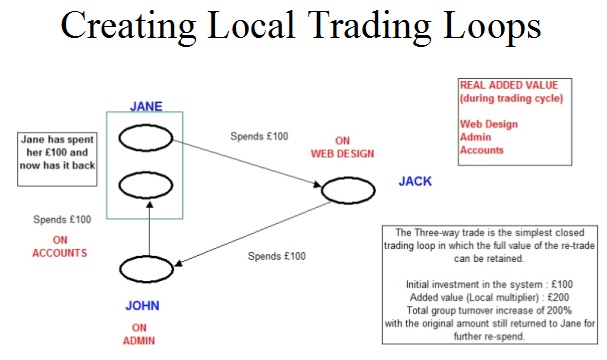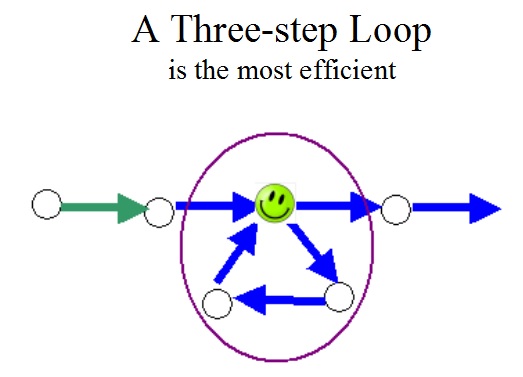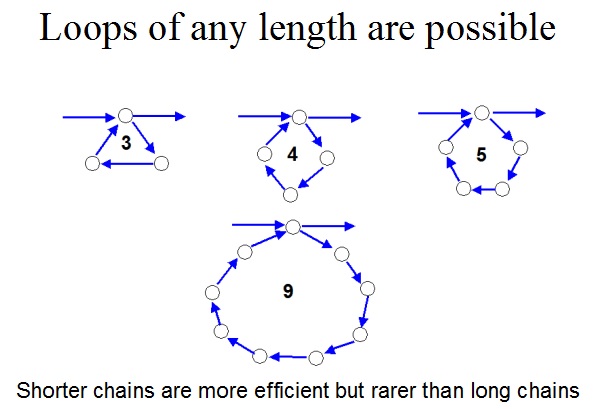The Local Multipler Table
Demonstrating precisely how local re-spending by local businesses affects increases in turnover.
Demonstrating precisely how local re-spending by local businesses affects increases in turnover.
The local multiplier table is an info-graphic produced by the Small Green Consultancy in order to demonstrate the various mathematical relationships between various levels of local re-spend within a defined (local) economy and the level of increased group turnover that this generates.
The effects of different rates of financial flow efficiency
on the systems £currency turnover.
on the systems £currency turnover.
Whilst the mathematical relationships between spend and re-spend are fixed and provide a context for specific demonstrations of the Local Multiplier Effect, first highlighted by Maynard Keynes and more recently developed by the New Economic Foundation with its work on "the money trail" ( LM3).
LM Infinite ?
In theory, if all the money traded in a closed economic system were re-used in full without leaving the system, there would be an infinite amount of money changing hands and the only limitation would be the capacity of citizens and entrepreneurs to create and provide the goods and services needed. Whist this theoretical utopia is unlikely ('external' taxation for example) it is nevertheless possible to achieve significant boosts to the local money supply thought generating more efficient 'trading circuits' that proactively favour local suppliers of goods and services.
A re-spend of 50% locally will double the amount of money in circulation locally compared to a situation where all secondary spending is done outside of the local system. If this re-spend value is increased to 66% then the amount circulating locally is tripled compared to the original amount first spent.
It is estimated that local to local spending already accounts for a 50% re-spend (source: page 52) in which case setting a target of a 66% re-spend seems not only potentially achievable but also a highly desirable prospect as it would result in a felt increase of 50% collective turnover compared to current levels.
A re-spend of 50% locally will double the amount of money in circulation locally compared to a situation where all secondary spending is done outside of the local system. If this re-spend value is increased to 66% then the amount circulating locally is tripled compared to the original amount first spent.
It is estimated that local to local spending already accounts for a 50% re-spend (source: page 52) in which case setting a target of a 66% re-spend seems not only potentially achievable but also a highly desirable prospect as it would result in a felt increase of 50% collective turnover compared to current levels.
Creating Local Trading Loops
Whilst the creation of a local trading chain will lead to a financial re-spend within the system, by far the most efficient situation is the creation of a closed re-spending loop, in which a certain proportion of spending finds its way back to to the original payer. Every time such a loop is created there is, by definition, a 100% re-spend of that money in the system, with a loop turnover that reflects the number of times a given amount of currency changes hands before returning to 'sender'.
Whilst the creation of a local trading chain will lead to a financial re-spend within the system, by far the most efficient situation is the creation of a closed re-spending loop, in which a certain proportion of spending finds its way back to to the original payer. Every time such a loop is created there is, by definition, a 100% re-spend of that money in the system, with a loop turnover that reflects the number of times a given amount of currency changes hands before returning to 'sender'.
Michael Hallam
10 October 2014
10 October 2014
